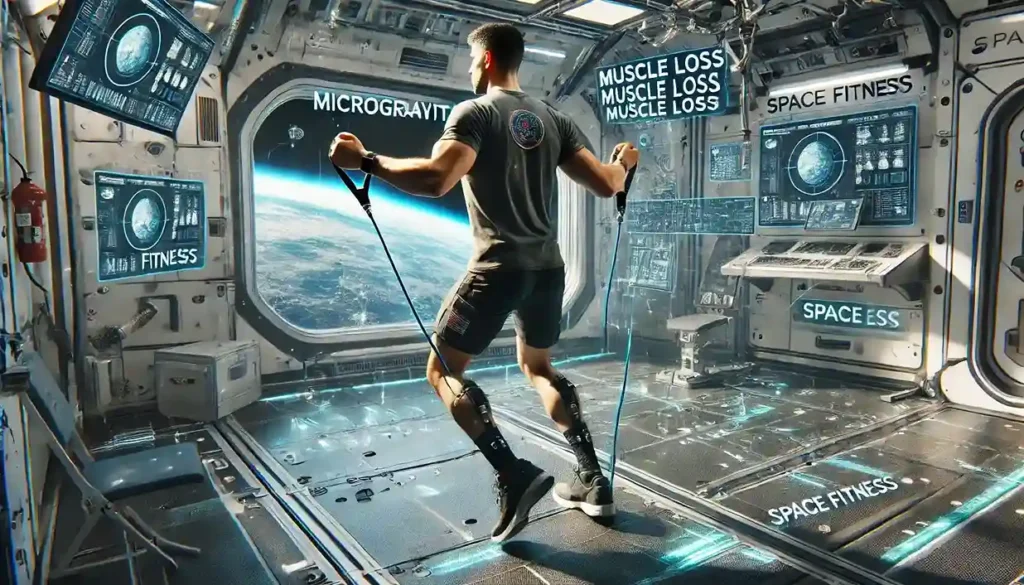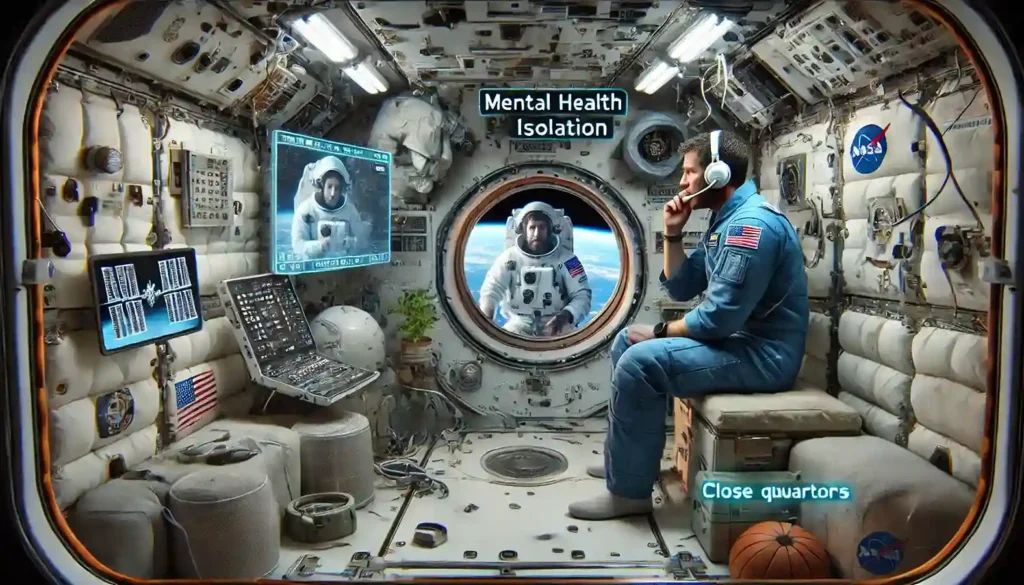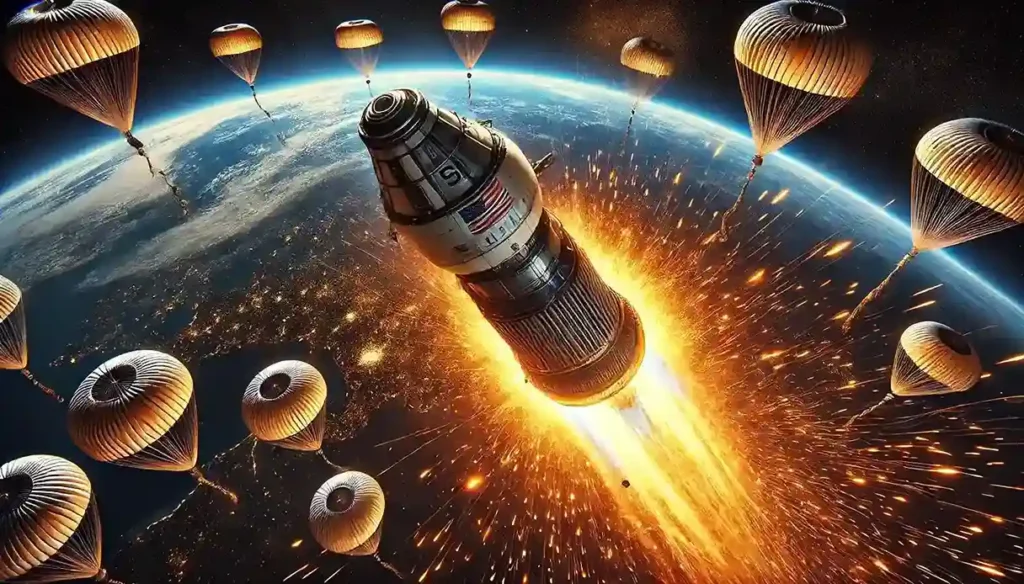Hello people! Space flight has traditionally been a stepping stone of mankind’s greatest achievement and remains to be a puzzle to science and technology. Of course, those trillions of people on the ISS and missions to the Moon and Mars are useful, as each is a progress in the understanding of the universe.
Firstronauts’ life in space, especially when their voyage will take several years, concerns muscular actions, but also mental ones. Amazing how scientists and spacemen have to live in space for months and, in some cases, years leaving all earthly things behind. I see them returning safely which means this joyful trip is over and we can all join them in the partying. This blog is going to describe how Astronauts who have been through some days, months or years in space Universe, struggle and how can they come back to be as successful as they are when they returned back to Earth.
Let’s discuss their journey!
Challenges of Long-Term Space Missions

Prior to driving a deeper penetration of the characterisation of the process of the return journey, a little background information on the nature of the ordeals the astronauts go through in their missions is given. Thus the human body does not get a place and a favorable environment to live or exist in. In a space station, people are free to move about in any fashion and any such movement characteristically results in many health related problems.
The Effects of Microgravity On the Human Body
One of the major concerns that affected astronauts during more extended duration missions was that the systems of the body had to adjust to conditions of microgravity.
- Muscles and bones need pressure on them, and since gravity does not apply its pressure when not exerted, muscles and bones weaken. Obviously, cosmonauts who are confined in small metal chambers for months lose muscle tone because they do not muster enough force enough to lift their body weight off the bed. Similarly, they can lack ability to maintain strong bones and end up occupying their bones, most of which turn out to be brittle.
- To combat such effects, the astronauts who remain in space are expected to exercise for about two hours every day. It increases its muscles and bones using special equipment like treadmill and resistance band among others for exercise. However, their involves other changes in their bodies which tell them that getting to the surface of the earth gravity is not easy.
Mental And Emotional Strain
As if the fact that absolutely no help can come from the Earth when you are in space is not enough, let us examine some of the psychological impacts of this sort of ordeal:
- It is lonely to be away from families and the normal ordinary life back on earth. The association indicated that despite making daily video calls and messaging with families and friends, astronauts sometimes feel lonely and stressed.
- The second is in fact entire physical proximity is involuntary in space missions: astronauts are compelled to step tightly with the same people for several months. For example, ISS is not a very large structure, and you can imagine there are almost no private spaces at all. All these can lead to stress, and anxiety and the astronauts manage stress by talking to the psychologists and other mental health workers from the mission control.
Preparing for Life Back on Earth
The stages of a mission conclude as the astronauts as well as the ground control teams get ready to come back to earth. Living with your parents is a complex process which always involves physical, psychological and technical aspects.
Physical Conditioning
While on space mechanism is compelled to continuously exercise, but after several months in space, bodies of the astronauts are very much compromised and require time to rebuild whenever there is exertion of gravitation pull on earth.
To make this transition easier, the astronauts begin practicing for re entry prior to even leaving the station. They have their own exercises and procedures, which are supposed to help their bodies alter the impact of gravity.

They also need to prepare for orthostatic intolerance, a condition where the body comes under considerable difficulty to manage blood flow thereafter more gravitation. This may result in dizziness and fainting every time one gets out of bed and stands up…First, let’s discuss an appreciation of some common problems related to blood circulation.
Upon entering the spacecraft, they might put on compressing garments- special suits – to manage pressure and gravitation variations, pressures.
Mental Preparation
Apart from that, the astronauts are equally prepared for life on earth, in terms of they way they think and eyes they have seen, before they return to earth. It is just very different to be in space for a long time – and when you come back to life back on earth, sometimes it is just terribly pressuring.
Apex felt on the body and positions that a person’s body might take after months in space could make it impossible to adapt to the Earth hence a resultant post-flight depression.
The Journey Back To Earth
In fact, the physical procedure of return to the Earth after a mission in the ISS or in any other mission entails a number of quite sensitive stages.
Undocking From The ISS
The first type of return is berthing from the ISS. The vehicle is said to be Soyuz capsule or even SpaceX’s Crew Dragon, from which, the vehicle then unberths from the station and begins its descent towards the planet. Further, Other maneuver include undocking, then another controlled burn to slow down to come out of space.
Returning to the Earth Atmosphere
If a spacecraft has to come back to the surface of the earth it has to face lots of heating due to air drag. Even the heat shield worn on the space craft to ensure the craft would not be burnt by heat still registers temperatures of up to 1,650°C or 3,000°F. It also helps in reducing such a craft from the orbital velocities to slightly slowing pace.
The return phase is perhaps one of the most dangerous phases of a mission because; anything as simple as a failure of a heat shield may happen and place the lives of the astronauts in jeopardy. Fortunately, leadership of space organizations including NASA and Roscosmos of Russia have advanced this process significantly and it extremely safe for astronauts.
Parachute deployment and landing
Following re-entry in the Earth’s atmosphere and acceleration, the spacecraft reduce speed through deploying parachutes. That is why like in Soyuz or Crew Dragon, designed in the United States, a group of rather small drogue is used, and then big main ones.
Then, as the crew eloquently puts it, the car returns to a hard surface or splashes into the seas. For instance the Russian Soyuz capsules are disposed in the desert regions of Kazakhstan and the astronauts recovery team is always in anticipation.
On the contrary, SpaceX’s Crew Dragon re-enters over the ocean and the use of boats, and a crew assists the crew and capsule both.

Recovery After Space Missions
When astronauts return to Earth, the process of transitioning back to life and the natural world begins. Returning to Earth after some time in space has been noted to have physical and psychological effects that make the rehabilitation process difficult.
Professional Medical Assistance
After the astronauts have set foot on the ground, they receive some sort of medical examination to determine their health status. Most space travelers develop lists, muscle weakness, and fatigue right after they return to the planet and subject themselves to gravity.
Basic movements such as standing and walking are complicated when a person has been immobile for several months in space.
To replenish fluids and monitor their condition, astronauts are offered drinks and assisted in standing and sitting. Some may be unable to walk or even stand again because microgravity has affected their muscles and body balance.
Long-Term Physical Restoration
Physical restoration may last several weeks to a few months, depending on the duration and gravity of the astronauts’ showing to microgravity. Physical therapists train the astronauts to enable them to stand and gain strength after the exercise. This is done through exercises that reconstruct the mass of the muscles, as well as coordination and stamina exercises.
Psychological Readjustment
Apart from physical therapy, astronauts are also required to undergo psychological therapy. Stress experienced during space missions can also cause an overload that manifests when astronauts return to Earth after many months in space. Astronauts undergo debriefing sessions to help psychologists and counselors assist them in how to go about their daily activities if they feel overwhelmed.
Safe Return Triumph
But each time it comes back home, part of the fun for me is the tension resolved by success, and by the perception that to these men up there, and to the team following them, every mission must be something more than a reported date with planned success.
Space travel is one of the biggest achievements in which engineers, scientists, doctors, and mission control officers give themselves to safeguard the astronauts.
It also helps the way for future missions where the problem of safely bringing people back is even more acute: for instance, if people are expecting long term explorations on the moons or on the planet Mars.
Conclusion
The ability to send men into space for several days and return back to the home planet again is a masterpiece of science and a success in men survival. Beginning from early phases where the astronauts get ready for the physical and mental health check for the journey back to earth up to all the phases of getting the necessary permits for returning to earth to being rehabilitated each phase in space exploration becomes a victory.
Human traveling in space is gradually progressing, and all data gathered from such missions shall facilitate development of secure and risk-free chances for travelers in other galaxies.
Each victorious homecoming draws us a little closer to the answer to the timeless question: why are we here and what other worlds exist?
FAQs
- What are the physical problems faced by astronauts in space and in particular other than on short missions?
People in space camps lose their muscular and skeletal mass as a result of microgravity, therefore need to exercise every day.
- In what manner do astronauts give read to re-enter in earth atmosphere?
They do exercises to live with gravity, dress in compressing garments, and be ready for orthostatic intolerance.
- Which psychological impacts are attached to space travel for astronauts?
Phobic anxiety and depression with loneliness, stress from isolation and confined living spaces are common and handled by counseling.
- What procedures are taken from astronauts after they have returned back to earth?
They receive PT and other treatments, counseling, and doctor’s help to gain strength and adjust to Earth gravity.




